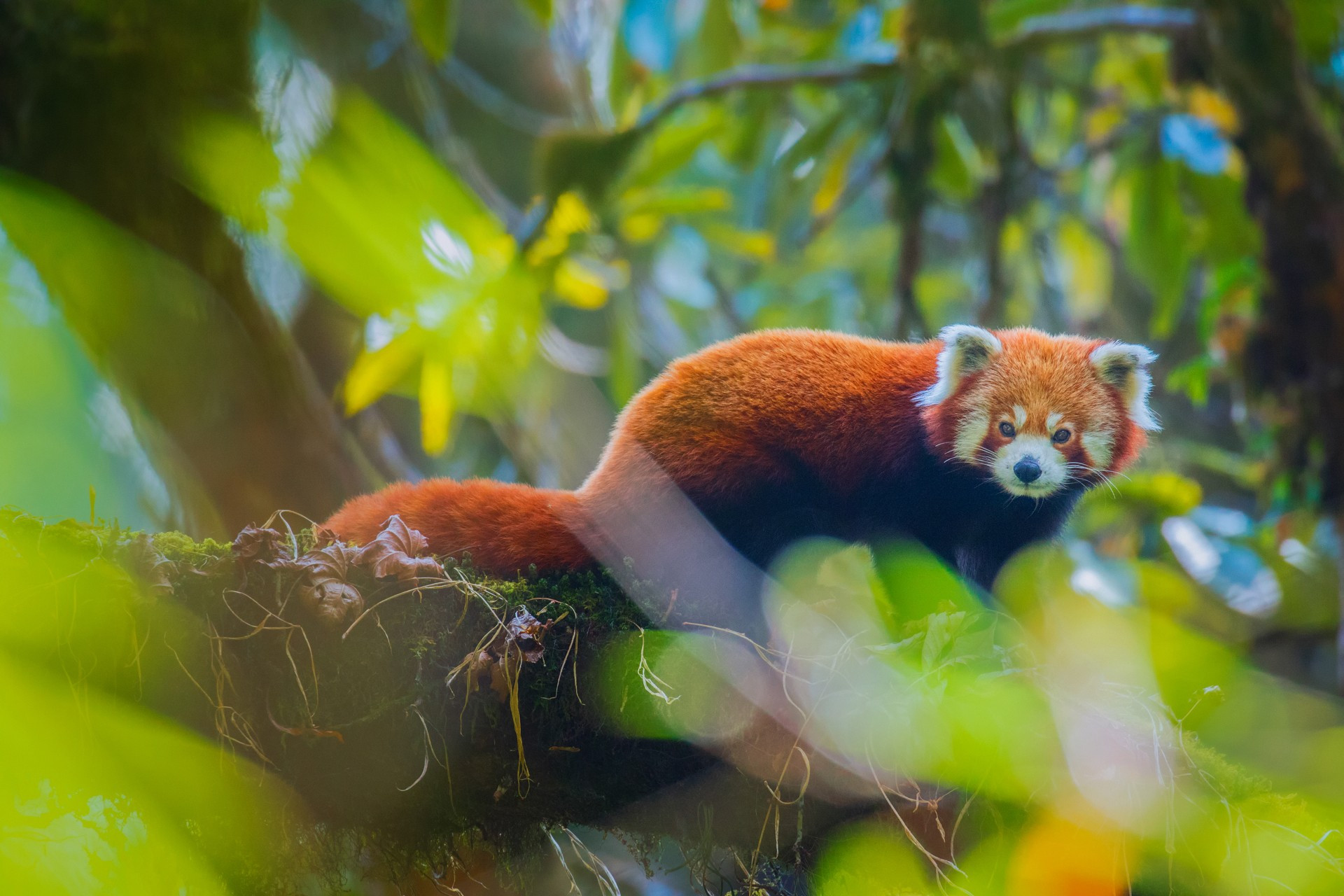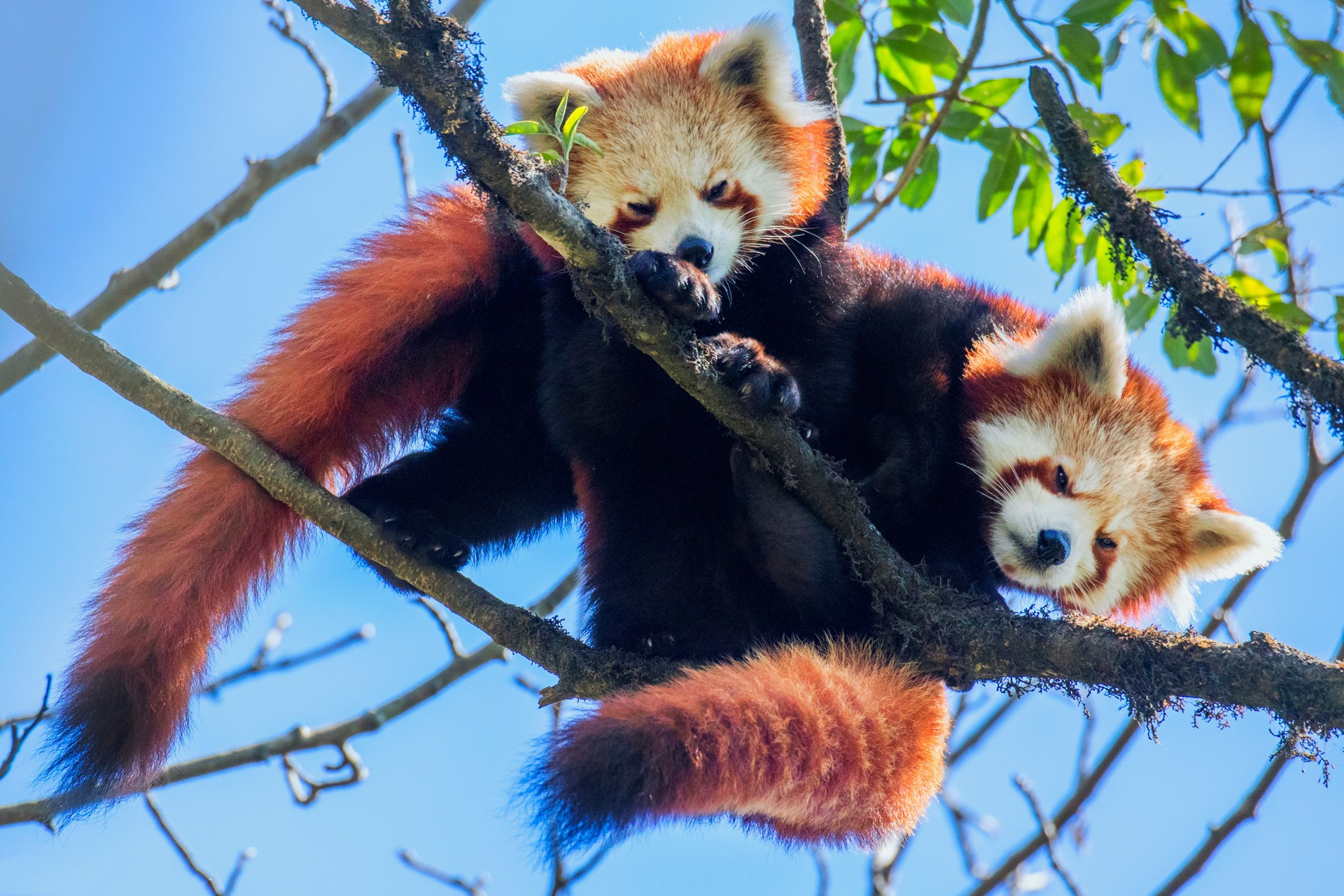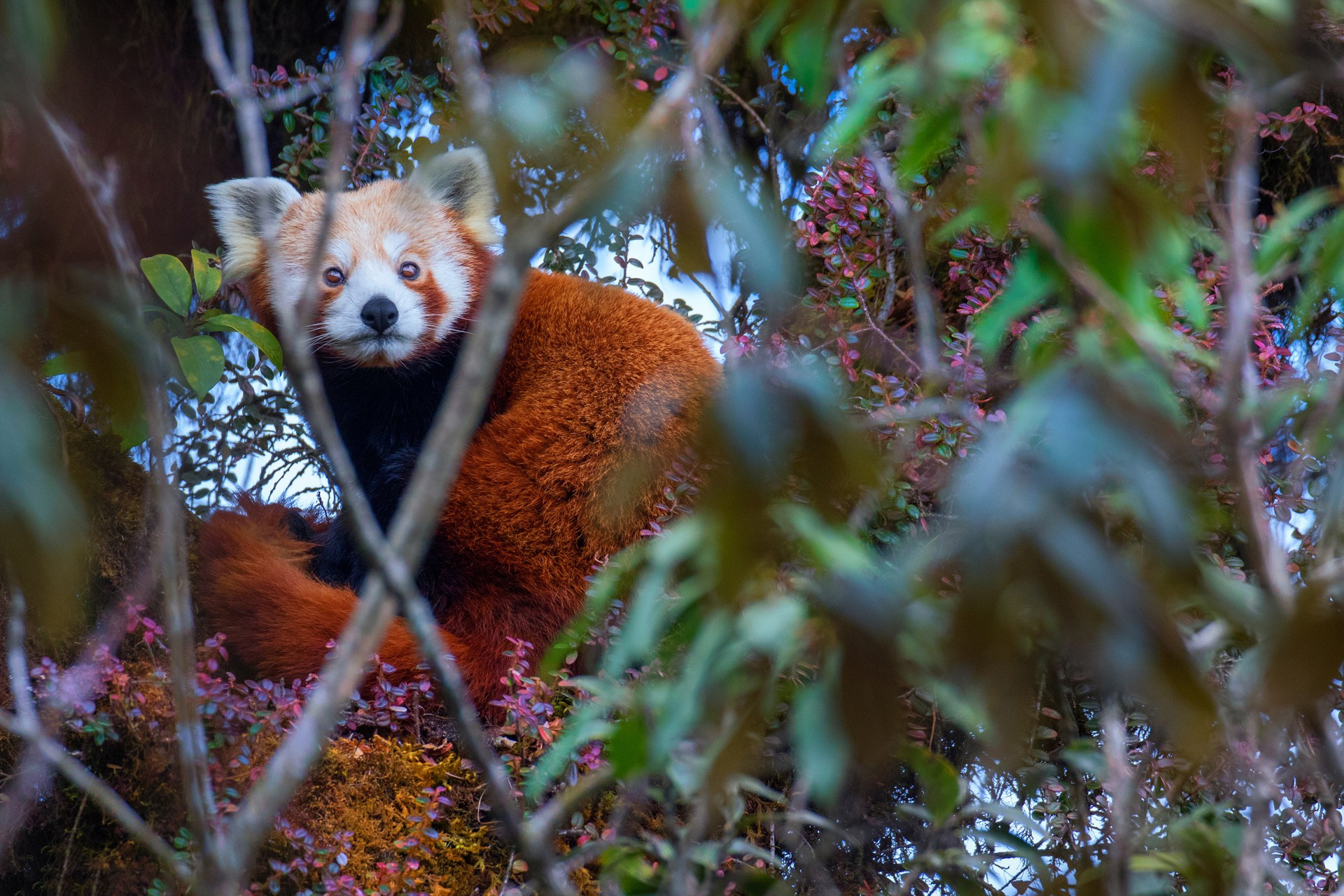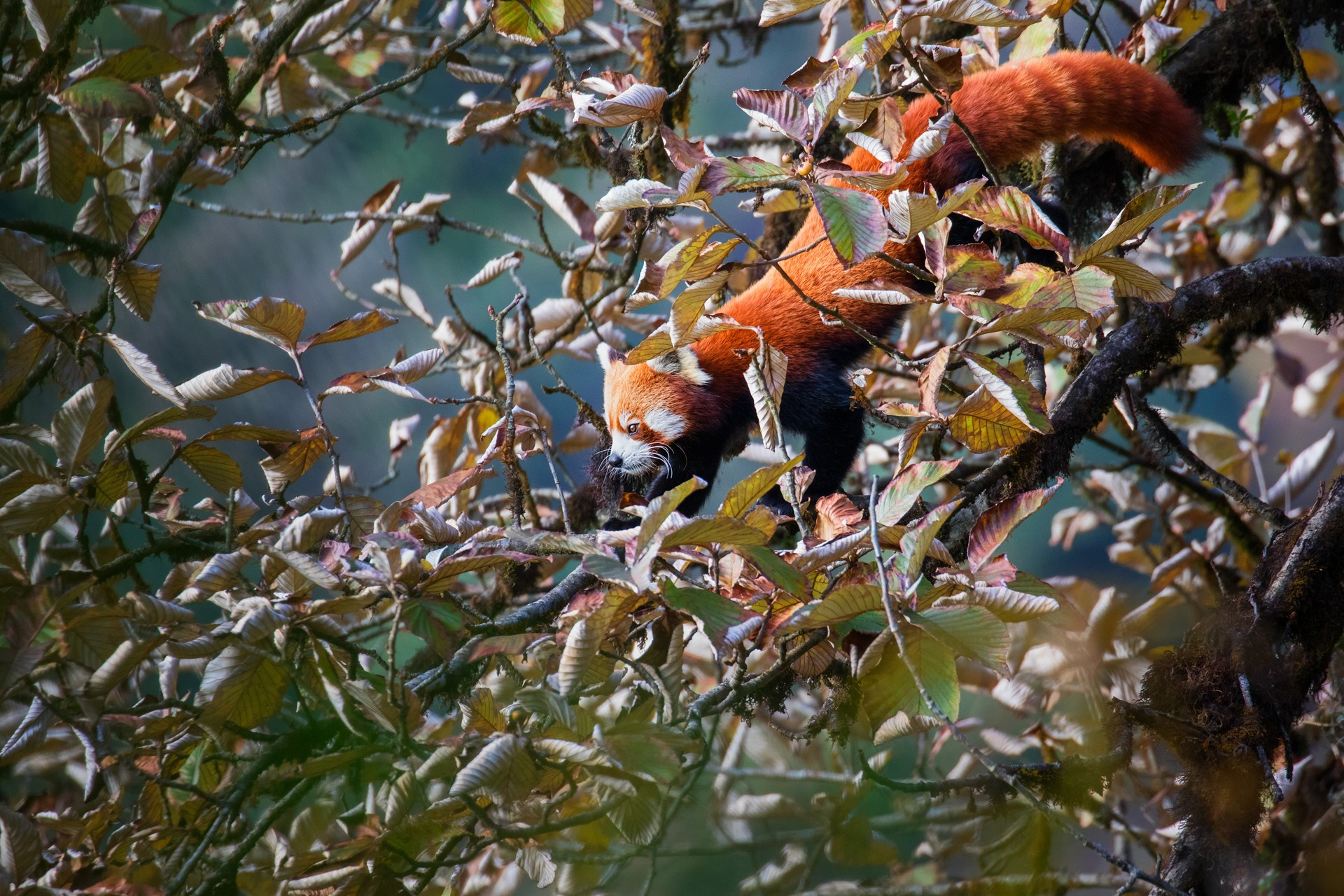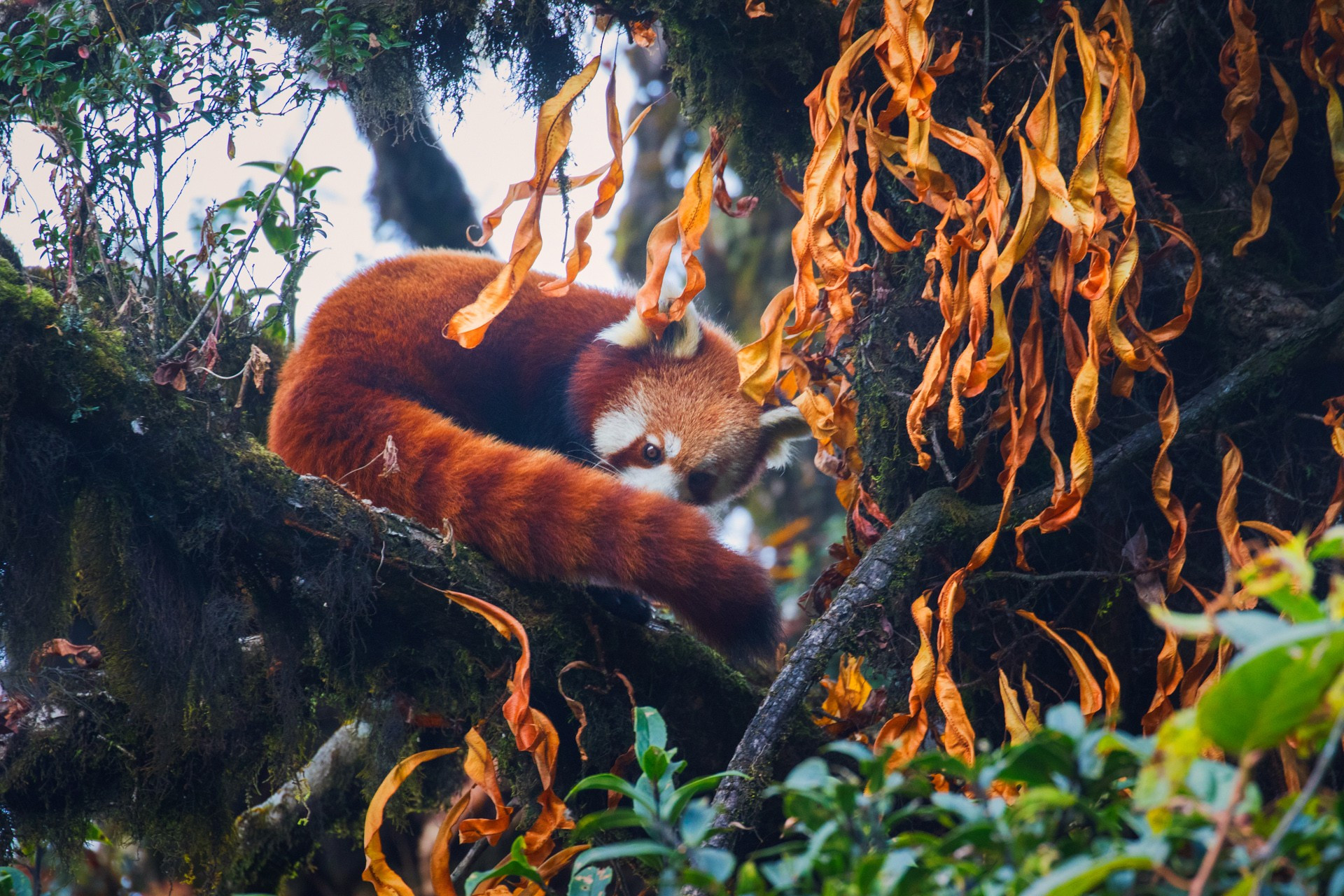The elusive Red Panda (Ailurus fulgens) is undoubtedly one of nature’s most alluring creatures. Its distinctive fur has earned this species monikers such as “Firefox”, “Firecat”, or “Fire-coloured cat”, and won it admirers from around the globe. Unfortunately, the Red Panda is a threatened species, with an estimated population of less than 10,000 remaining in the wild.
Around half of the Red Panda’s natural habitat lies in the Eastern Himalayas – Nepal, Sikkim, northern West Bengal, Bhutan, and Arunachal Pradesh. Its remaining home is in northern Myanmar and a few provinces of central China. I work as a naturalist and photo mentor in the heart of Red Panda habitat: Singalila National Park, situated in the northernmost part of West Bengal, sandwiched between Nepal and Sikkim.
My first encounter with the Red Panda was in 2015, on my fourth visit to Singalila (it’s difficult to spot them if luck doesn’t favour you). I will never forget the moment that I spotted the cutest individual feeding on new leaves in the dense Himalayan bamboo forest. I’d seen this animal in books, documentaries and at the Darjeeling Zoo, but that first eye contact in the wilderness was an intimate and unforgettable experience. The Himalayan forest is dense and finding the appropriate light for photography is tough. Out of all the times I’ve photographed them, I have managed to do so in good light only 5 to 6 times. In March 2016, I was blessed with a sighting that felt like one in a million – a Red Panda mother with two cubs.
Sightings are not just about photography. Over time, I learnt more about this creature. I noticed that, for example, under threat, it sometimes stood on its hind legs to appear larger. Or that it could taste the air and analyse the vapour content in it through its mouth and tongue to test its surroundings for predators.
Although Red Pandas are rarely seen in the wild anymore, I have had the opportunity to photograph them on many occasions over the past three years – 43 times, actually, but I am just as excited every single time.
Arguably, the Red Panda is the only true Panda, as it is the only species of the Ailuridae family. The Giant Panda, which is believed to be closely related, actually belongs to the bear family, Ursidae. The Red Panda is known to have two subspecies, Ailurus fulgens fulgens (Himalayan subspecies) and Ailurus fulgens styni (Chinese subspecies), although recent studies claim that the two are actually distinct species rather than subspecies.
This shy, small mammal prefers temperate broadleaf forests and sub-alpine conifer forests with bamboo thickets. It lives in the altitude range of 1500-4000 meters. A remnant population is in Garo and Khasi Hills in Meghalaya (700-1400 meters), where temperatures range from 10 to 25°C through the year and from 0 to -5°C in winter.
Red Pandas are masters of camouflage in their natural world of rugged mountain terrain and dense Himalayan forests. Surprisingly, their fiery coat actually helps them to blend in in the dark green forest. Their thick fur and furry tails also afford protection from the harsh cold and snow.
Despite having the morphological characteristics of a carnivore, Red Pandas have a specialised diet of bamboo leaves. Did you know that the word “Panda” has its roots in the Nepali word “Ponya”, which means bamboo-eating animal? In fact, bamboo leaves comprise 95 per cent of their diet, and they eat bamboo shoots too. They eat a lot of bamboo leaves because they can digest only 30 per cent of the bamboo diet. They also eat seasonal fruits such as Ward’s Whitebeam (Sorbus wardii) and kiwi, berries, and some lichens. They are known to eat bird eggs and insects as well.
The average head and body length of a Red Panda is 56cm- 63cm and the tail length is around 37cm to 47cm. Its average body weight is 3kg to 6.5kg. Males are slightly bigger than females although it is difficult to tell them apart. Red Pandas survive for an average of 10 years in the wild and almost 15 years in captivity.
You may also like to read
Red Pandas are highly arboreal and their evolved wrist bones can work like an opposable thumb to grip and hold onto branches. They have long, sharp claws which help them to walk on trees upside down. They are excellent climbers and can climb to the topmost branches of most trees.
They are nocturnal and crepuscular, which means they are active at dawn and dusk. During the day they sleep high up in the canopy, with their tails wrapped around a branch.
Red Pandas lead solitary lives except during the breeding season when males and females share territory for a short period. Males can occupy territories that overlap those of several females. It is believed that there is a particular day when the female allows the male to mate, not before or after. (*Source: Cherub of the Mist documentary by Bedi brothers and Dr Sunita Pradhan)
The female gives birth to 1-4 cubs in the monsoon when food is plentiful. The cubs are mostly raised in tree hollows and remain with the mother for a year until the next litter is about to be born and they are independent enough to venture into the wild alone. The growth of their young is slow, and cubs take around 18 months to gain sexual maturity.
The Red Panda was listed as Endangered by the IUCN in 2015, and is a Schedule I species under India’s Wildlife Protection Act (1972). Worryingly, its population has declined by 50 per cent in just the last 18 years. Its natural predators include the Clouded Leopard, Yellow-throated Martens, etc.
The major threat to Red Panda survival is habitat loss and fragmentation. Their dense bamboo habitat has been massively cleared for timber, bamboo by-products and firewood. They are also a target of poachers, as caps made with the fur of the Red Panda are very popular in the Chinese market.
The Red Panda is the state animal of the Himalayan state, Sikkim, and is very much a part of its culture. Winter (December-January) sees the 'Red Panda Winter Festival' here, where culture, harmony, conservation and ethnic Sikkimese food are celebrated, bringing together both locals and tourists.
Zoos play a key role in aiding and conserving this endangered species, with breeding programmes that maintain viable populations. America, Europe and Australia have captive breeding programmes in association with the Red Panda Network (e.g.: Smithsonian’s National Zoo, USA). The pet trade is suspected to be a threat to the species, since Red Pandas, once found, are easy to poach and fetch handsome amounts for poachers.
Many international NGOs such as the Red Panda Network and World Wildlife Fund (WWF) work on Red Panda conservation. They encourage Red Panda tourism, which they believe will be beneficial for the future of the species.
Sustainable eco-tourism creates job opportunities and permanent income for locals, which automatically generates awareness about species and conservation. But it is equally important for authorities to ensure tourists follow basic rules, such as keeping a fair distance from the animals and sticking only to trails marked out by the forest department.
